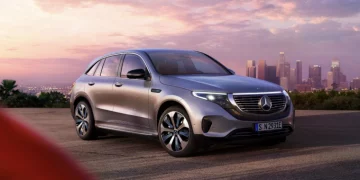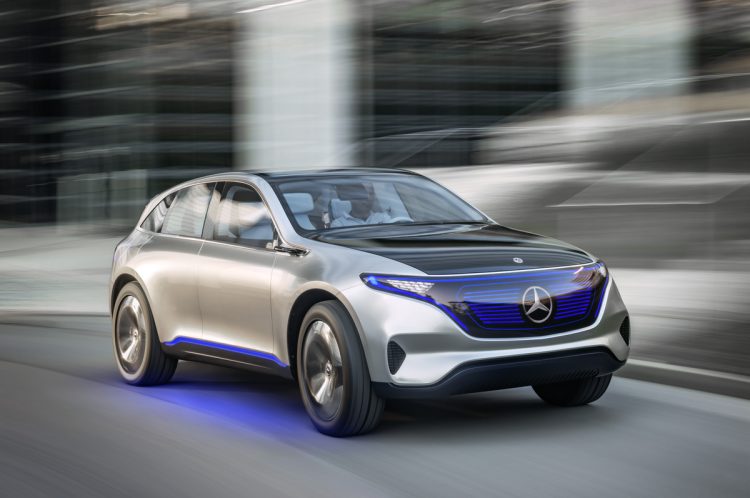Introduction: The Next Frontier in Electric Vehicle Charging
As electric vehicles (EVs) continue to gain traction in the global automotive market, the need for efficient, convenient, and accessible charging solutions has become more critical than ever. Traditional plug-in charging stations have served the purpose, but as the demand for electric vehicles grows, the limitations of wired charging systems are becoming increasingly apparent. One of the most promising innovations in EV charging technology is wireless charging, which could revolutionize the way we power our electric vehicles. Wireless charging offers the potential for greater convenience, faster charging times, and a more integrated charging experience, all of which could accelerate EV adoption worldwide.
In this article, we will explore how wireless charging works, the potential benefits it offers to electric vehicle owners, the challenges to its widespread implementation, and how this technology could reshape the future of transportation. As we delve into the potential of wireless charging, we will examine its impact on EV design, infrastructure, user experience, and the broader energy landscape.
How Does Wireless Charging Work?
Wireless charging, also known as inductive charging, uses electromagnetic fields to transfer energy between two coils—one located in the charging station (or charging pad) and the other in the electric vehicle. The process begins when an electric current is passed through the charging pad, creating a magnetic field. This magnetic field is then detected by the receiver coil in the vehicle, which converts the magnetic energy back into electrical energy to charge the vehicle’s battery.
While wireless charging systems for electric vehicles are similar in concept to wireless charging technologies already used for smartphones and other devices, the scale and power required for EV charging are significantly greater. For this reason, the development of wireless EV charging systems has required advancements in magnetic resonance technology, which allows for the transfer of energy over a greater distance and with greater efficiency.
There are two main types of wireless charging technologies currently under development:
1. Magnetic Inductive Charging (Short-range)
This is the most common form of wireless charging technology for EVs. It requires the vehicle to be positioned directly above the charging pad in order for the charging coils to align and transfer energy efficiently. Magnetic inductive charging is already being tested in some pilot programs, with charging pads installed in specific parking spots or garages.
2. Magnetic Resonance Charging (Long-range)
Magnetic resonance charging technology allows for more flexibility, as the vehicle does not need to be directly aligned with the charging pad. The system uses resonant electromagnetic fields to transfer energy over a longer distance, offering more convenience and flexibility in terms of positioning the vehicle. This type of wireless charging has the potential to enable dynamic charging on the go—charging the vehicle while driving on specially equipped roads.
Benefits of Wireless Charging for Electric Vehicles
The potential of wireless charging for electric vehicles extends far beyond convenience. Below, we explore the key benefits that this technology offers to EV owners, automakers, and society at large.
1. Convenience and Ease of Use
One of the most significant advantages of wireless charging is the convenience it provides. Traditional plug-in charging systems require drivers to manually plug in their vehicle to a charging station, which can be a cumbersome process, especially during inclement weather or in poorly lit areas. Wireless charging eliminates this step entirely, allowing drivers to simply park their EV over a charging pad, which automatically starts the charging process.
This hands-free charging experience offers unparalleled convenience, particularly in busy urban areas or at home, where drivers can charge their vehicle overnight without needing to leave their home or manually connect cables. As wireless charging technology advances, it is also expected to offer more flexibility in terms of installation locations—charging pads could be integrated into driveways, garages, parking lots, and even public roads.
2. Increased Charging Speed
Wireless charging systems are continuously improving in terms of speed. While traditional plug-in charging systems can take several hours to fully charge an electric vehicle, advancements in wireless charging technology have led to the development of high-power systems capable of charging EV batteries much faster. This faster charging process would make EV ownership more practical for consumers, addressing one of the primary concerns about the convenience of electric vehicle charging.
With the continuous improvement of wireless charging power outputs, it is expected that the charging time for electric vehicles will continue to decrease, narrowing the gap between charging times for traditional internal combustion engine vehicles and electric vehicles.
3. Enhanced Safety Features
Wireless charging systems also have a safety advantage over traditional plug-in charging. With wireless systems, there is no need for physical connections, which can wear out or become damaged over time. This reduces the risk of accidents, such as electrical shocks or short circuits, that could occur during the plugging or unplugging process.
Additionally, wireless charging systems can be designed with built-in safety features that automatically stop the energy transfer when there is a foreign object detected in the charging area, preventing potential harm to pedestrians or animals that might inadvertently walk across the charging pad.
4. Potential for Dynamic Charging on the Move
One of the most groundbreaking features of wireless charging technology is its potential for dynamic charging while driving. Magnetic resonance charging systems have the potential to enable EVs to charge while in motion, by installing charging pads along roads and highways. This technology would allow electric vehicles to recharge their batteries while driving, eliminating the need to stop for a charge and significantly extending the driving range.
Dynamic charging could revolutionize the long-distance travel experience for EV owners, making it possible for vehicles to remain charged for extended periods without needing to stop at charging stations. This could greatly alleviate range anxiety and encourage more people to switch to electric vehicles for long trips.
5. Infrastructure Integration and Reduced Maintenance Costs
Wireless charging systems have the potential to be integrated into existing infrastructure, such as parking lots, streets, and highways. As these systems are embedded into the environment, the need for extensive public charging stations would be minimized. This could significantly reduce infrastructure costs and simplify the installation process, as there would be no need to install individual charging stations for each vehicle.
Moreover, wireless charging systems are less prone to wear and tear than traditional charging stations, reducing maintenance costs over time. There is no need to replace charging cables, connectors, or plugs, which often experience damage due to repeated use.

Challenges and Obstacles to Widespread Adoption of Wireless Charging
While wireless charging offers numerous advantages, there are still several challenges that need to be addressed before it can become a mainstream technology.
1. Cost of Implementation
One of the most significant barriers to widespread adoption of wireless charging technology is the cost. The infrastructure required to support wireless charging, such as the installation of charging pads and the development of compatible EVs, is currently expensive. As with any emerging technology, the initial costs of developing and deploying wireless charging systems can be prohibitive for both consumers and manufacturers.
However, as the technology matures and economies of scale are realized, the cost of wireless charging is expected to decrease, making it more accessible to a wider range of consumers.
2. Charging Efficiency and Power Loss
Despite significant advancements, wireless charging systems are still less efficient than traditional plug-in charging systems. Some energy is lost during the transfer process, reducing the overall efficiency of the charging process. Researchers are working to improve the efficiency of wireless charging systems, but until these issues are resolved, wireless charging may not be as energy-efficient as wired charging.
3. Standardization and Compatibility
Currently, there are multiple wireless charging technologies in development, and there is no universal standard for wireless charging in electric vehicles. For wireless charging to become widely adopted, there must be standardization across the industry to ensure compatibility between different EV models and charging stations. Until a common standard is established, consumers may face issues with compatibility between their vehicles and the available wireless charging infrastructure.
The Future of Wireless Charging for Electric Vehicles
The future of wireless charging for electric vehicles is bright. As the technology continues to evolve, we are likely to see faster, more efficient charging systems that require less time and less energy. Furthermore, as the infrastructure for wireless charging becomes more widespread, the convenience of owning an electric vehicle will improve, encouraging even more consumers to make the switch.
Moreover, dynamic charging systems that allow EVs to charge while driving could be a game-changer, enabling long-range EV travel without the need for frequent charging stops. As more governments and private companies invest in research and development, wireless charging could become an essential feature of the electric vehicle ecosystem in the near future.
Conclusion: A Convenient, Efficient, and Sustainable Future for EVs
Wireless charging technology holds the potential to completely transform the EV charging landscape. By offering greater convenience, faster charging times, and enhanced safety features, wireless charging can make electric vehicle ownership even more accessible and appealing to consumers. While challenges remain in terms of cost, efficiency, and standardization, the continued development of wireless charging systems promises to usher in a new era of sustainable and user-friendly transportation. As electric vehicles become more ubiquitous and charging infrastructure evolves, wireless charging may become a key component in making electric mobility the norm, rather than the exception.











































